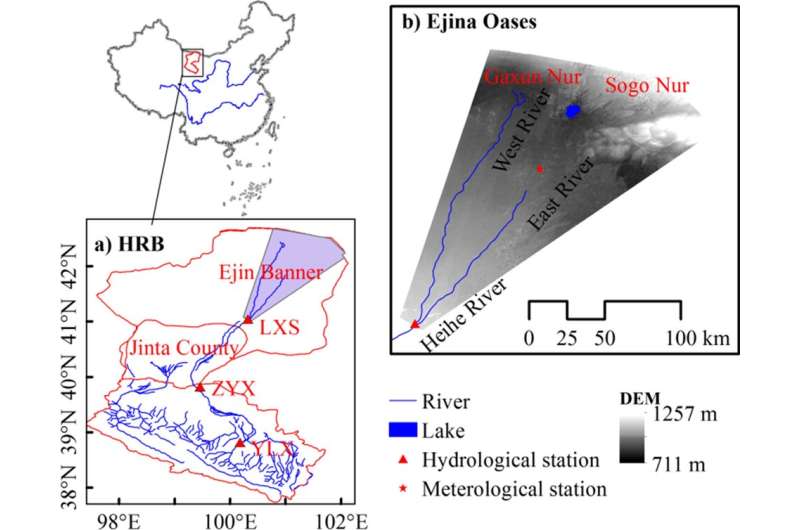This article has been reviewed according to Science X's editorial process and policies. Editors have highlighted the following attributes while ensuring the content's credibility:
fact-checked
trusted source
proofread
Study shows impacts of ecological water diversion project on water and ecosystem service flows in drylands

The development and use of water resources in drylands is linked to the sustainable development of dryland ecosystems. Therefore, rational allocation of water resources in drylands and scientific assessment of their values are important for sustainable development in the region. However, there is a knowledge gap on how to adequately assess the value of arid ecosystems and the trade-off between their values and the costs of maintaining them.
Researchers from the Northwest Institute of Eco-Environment and Resources (NIEER) of the Chinese Academy of Sciences found that the ecological water diversion project (EWDP) has a positive impact on water resources security and ecosystem improvement in the lower inland river basin by altering the water and ecosystem service flows. The study was published in Applied Water Science on March 6.
The researchers discovered the land use and land cover changes with the implementation of the EWDP, and estimated the water balance in the Ejina Oases and the water consumption of each ecosystem during the period 1990–2015.
They also revealed the water use, ecosystem service values (ESVs), ecological environment and socio-economy in Ejina Oases before and after the EWDP, and their interrelationship from 1990 to 2015.
The study results showed an increasing trend of deciduous broadleaf forests dominated by Populus euphratica with the implementation of the EWDP in 2000. At the same time, the lakes are undergoing a process of change from shrinking and drying to recovering and expanding from 1990 to 2015.
The total water consumption of Ejina Oasis decreased from 5.26*108m3 in 1990 to 4.79*108m3 in 2000, and then increased to 5.97*108m3 in 2015. Data indicated that there was little change in the water consumption of forests, grasslands and croplands, while there was a significant change in the water consumption of water or wetlands.
The implementation of the EWDP changed the land use and land cover, reallocated the water resources in the Ejina Oases and the water consumption of each ecosystem during the period 1990–2015.
The researchers also examined the changes in the value of ecosystem services in the Ejina Oases. They used two research methods to calculate the total ESVs changes of different ecosystems in Ejina Oases during the period 1990–2015 and concluded that the ESVs for each ecosystem vary greatly in these two methods and the second method is more reasonable.
This study, for the first time, quantitatively evaluated the water productivity of different ecosystems in the drylands, and provided a reference for the ecological compensation and water trading between regions in the river basin.
More information: Zhixiang Lu et al, The reallocation of water and ecosystem service values in arid ecosystems with the implementation of an ecological water diversion project, Applied Water Science (2023). DOI: 10.1007/s13201-023-01901-w
Provided by Chinese Academy of Sciences





















